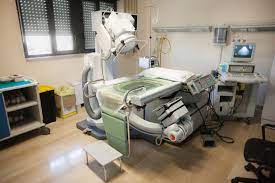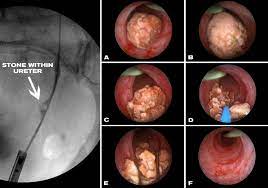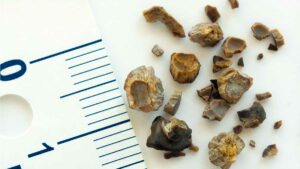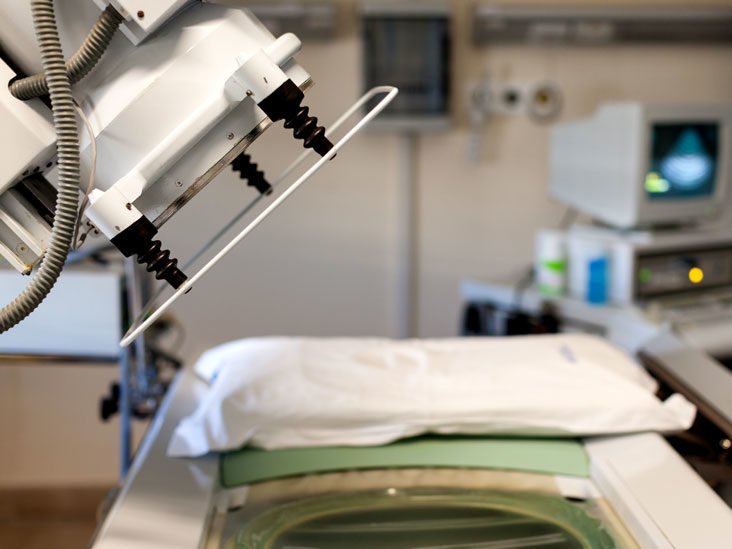Lithotripsy is a procedure that uses shock waves to break up kidney stones. It allows them to pass naturally. This article will discuss lithotripsy, the risks associated with this treatment, and what you can do before and after your surgery to ensure you have a speedy recovery.
Contents
- 1 What Is Lithotripsy
- 2 Some Related Questions
- 3 Types Of Lithotripsy
- 4 Other Procedures To Remove Kidney Stones
- 5 Size Of Kidney Stone
- 6 When Lithotripsy Is An Ideal Treatment
- 7 Patient Preparation
- 8 Procedure Of Lithotripsy
- 9 Follow Up
- 10 Recovery Period
- 11 Medications (Before Or After)
- 12 Risks And Complications
- 13 Conclusion
What Is Lithotripsy

Lithotripsy is a way to break kidney stones using shock waves and take them away from the body.
It makes use of a long tube instead of using instruments unlike in other surgical methods. Therefore, there is no risk of injury to other parts of the body.
We use this procedure on the following types of stones: calcium oxalate (most common), uric acid, cystine, and xanthine. We then pass these stone fragments through your urine.
It is a minimally invasive procedure. It means that patients do not have extensive incisions. Therefore, for this condition, the recovery time is shorter than other treatments.
Some Related Questions
When To Perform Lithotripsy?
Lithotripsy is performed when the kidney stones are too large to pass out on their own. Or in some cases, if they have broken into smaller pieces.
Who Can Be Treated With Lithotripsy?
Lithotripsy has been used to treat patients with kidney stones, bladder stones, and even gallstones. This procedure can be performed on children. However, the patient should weigh all options before opting for lithotripsy.
Types Of Lithotripsy
Shock Wave Lithotripsy
This procedure involves passing shock waves into the body to break up kidney stones without any discomfort or side effects.
Laser Lithotripsy
This procedure involves passing lasers into your body. So they can shatter kidney stones into small fragments that will be easily passed without any pain.
Extracorporeal Shockwave Lithotripsy (ESWL)
This procedure uses high-energy shock waves with a machine called a lithotripter. It is used to break up the stones in your kidneys.
Other Procedures To Remove Kidney Stones

- Retrograde Pyelolithotomy
- Percutaneous Nephrolithotomy
- Ureteroscopy
NOTE: Lithotripsy is an outpatient procedure. It may be performed instead of ureteroscopy if the stone cannot be removed through other methods. Or that’s too large to pass on its own (over three-quarters of an inch [19 millimeters] in size).
Size Of Kidney Stone

Generally, the size of a kidney stone removed by lithotripsy determines how much pain it is likely to cause.
- Stones larger than three-quarters of an inch (19 millimeters) are more painful. They require stronger medication for relief.
- Smaller stones can be dissolved with medications alone.
However, most patients will need to take some type of pain medication.
When Lithotripsy Is An Ideal Treatment
If you have a very large stone in your kidney, and the doctor wants to remove it. But knows that it will cause too much damage, then they can use lithotripsy. This is when they shoot sound waves at the stone until it breaks into pieces.
It is also common for patients who are not candidates for ureteroscopy. Because of their health conditions, such as those with heart disease and autoimmune diseases. Therefore, lithotripsy is also highly recommended for such patients. As it does not require general anesthesia. Else it can cause serious complications if the patient has an underlying medical condition.
When opting for lithotripsy, it is important to remember that it cannot be used in all cases. Also, ureteroscopy may have a lower success rate compared to Lithotripsy. But has fewer risks associated with it. Hence why many patients opt for both procedures depending on their condition and individual preferences.
NOTE: In comparison with ureteroscopy – which involves inserting a scope into the bladder – patients usually opt for lithotripsy because it is less invasive and there are fewer risks involved.
Patient Preparation
- Before surgery, patients need to stop taking some medicines. They can’t take them for at least a week before the surgery.
- The doctor may ask you not to eat any food on the day of your surgery. If you are planning to have your surgery in the morning, make sure you don’t eat after midnight the night before.
NOTE: It is advisable that you avoid smoking and drinking alcohol during the recovery period. Since these activities can lead to complications such as vomiting, nausea, and breathing problems.
Procedure Of Lithotripsy
The process of lithotripsy may vary depending on your doctor’s instructions and the type of lithotripter used. The basic steps of lithotripsy are:
Step 1
You will be given anesthesia to make you sleep during the process. One won’t feel any pain when the procedure is done. Your anesthesiologist can help inform you about what to expect from this part of your treatment. You should also tell them if there is a possibility that you are allergic to the medications they plan on giving you.
Step 2
Your doctor will use ultrasound so he/she can see where your kidney stones are located to guide him when using lithotripsy. They may also use X-ray or CT scans for this purpose, depending on your condition and treatment options that are available at the time.
Step 3
Your doctor will insert a probe (the lithotripter) through your urethra and into the bladder. Until it reaches the kidney stones you need to remove. They are usually located in either one or both of your kidneys. This part can be very uncomfortable. Because inserting anything into the urinary tract is not easy for most people.
Step 4
Once the probe is in place, your doctor will use lithotripsy to break down kidney stones into smaller parts. Now, they can easily pass out of your body in urine. This process may take anywhere from a few seconds up to several hours depending on how large and complex it is (meaning there are many stone pieces). Your doctor will determine how much time is needed.
Step 5
After the procedure, your doctor may ask you to urinate. To find out if there are any stones left in your body, this test is done. There are two ways of doing this: another lithotripsy session, or other treatment options.
Step 6
After this process, it will take several days for you to recover from lithotripsy. However, you can still expect to feel sharp pains in your back and side when urinating during the first day or two after this procedure.
Step 7
This is why you must ask your doctor what medications they recommend before having a lithotripsy treatment. So the pain doesn’t get worse than it already is.
Step 8
Your doctor will also give you pain medications to take for a few days after the procedure. So that you can get back on track with doing activities again. And get rid of the fear and discomfort associated with this treatment option.
NOTE: Lithotripsy can cause some discomfort as well as anxiety about possible complications of kidney stones.
Follow Up
- Some patients feel a deep ache in the back and groin as well as nausea, chills, and fever after lithotripsy surgery. These symptoms usually last no more than 24 hours.
- You may need to stay overnight following lithotripsy for observation or pain relief if you are older than 60 years of age or have a history of heart disease.
- After having lithotripsy, you will need to drink a lot of water. This helps flush the fragments out through your urinary tract. It prevents further complications like infection or bleeding in the ureter (the tube that carries urine from each kidney to the bladder).
NOTE: You may also need antibiotics at home if there is a chance that fragments are still in the tubes.
Recovery Period
The recovery period after lithotripsy is generally six to eight weeks. Although patients often have some pain during this time as well.
Some symptoms of kidney stones can persist for several months or longer even when you’ve passed all the stone fragments.
There are different diets and fluids that people can drink before the surgery. This will depend on the type of surgery. If there is any injury, this will also affect your diet.
Medications (Before Or After)
Surgeons use lithotripsy in conjunction with other procedures. You will likely take medications before or after the procedure to prepare your kidneys and bladder for surgery (such as antibiotics, diuretics, and pain medication).
It is a good idea to ask your doctor about what medications you need to take before or after having lithotripsy. It is because some medications can affect how well this treatment works. Specialists do not allow some medications while opting for the procedure of lithotripsy.
The type of medications you’ll receive will depend on what kind of lithotomy you have: percutaneous nephrolithotomy or ureteroscopy.
Risks And Complications

The risks and complications of lithotripsy are:
- Urine leakage
- Urinary tract infection (UTI)
- Kidney damage (renal failure)
- Fecal incontinence
- Blood in your urine (hematuria: need not worry about traces of blood)
- Injury to the anus and rectum (depends on the severity of the case)
- Bladder spasms after the procedure. However, this condition does not happen in all patients as it depends on your body’s ability to heal itself.
NOTE: Damage to the kidneys, bowels, or bladder due to lithotripsy can cause lifelong problems such as kidney stones and urinary tract infections (UTI). You must follow your doctor’s instructions on how often you should urinate after lithotripsy so this does not happen. For a patient to avoid the risks and complications of lithotripsy, they must follow their doctor’s advice.
Conclusion
Lithotripsy is not an invasive procedure that will leave scars on your body. Like some other medical treatments might do. Doctors can even perform lithotripsies in their offices. It means there’s no long hospital stay needed for recovery time after the surgery has taken place. Leave us a comment if we can answer any questions.
Do you want to get rid of diabetes? Join our online diabetes consultation program and reverse your Diabetes naturally through lifestyle changes such as a Personalized Diet plan, Exercise, dieticians, and health coaches.


